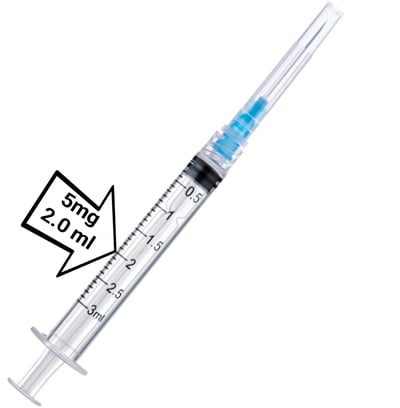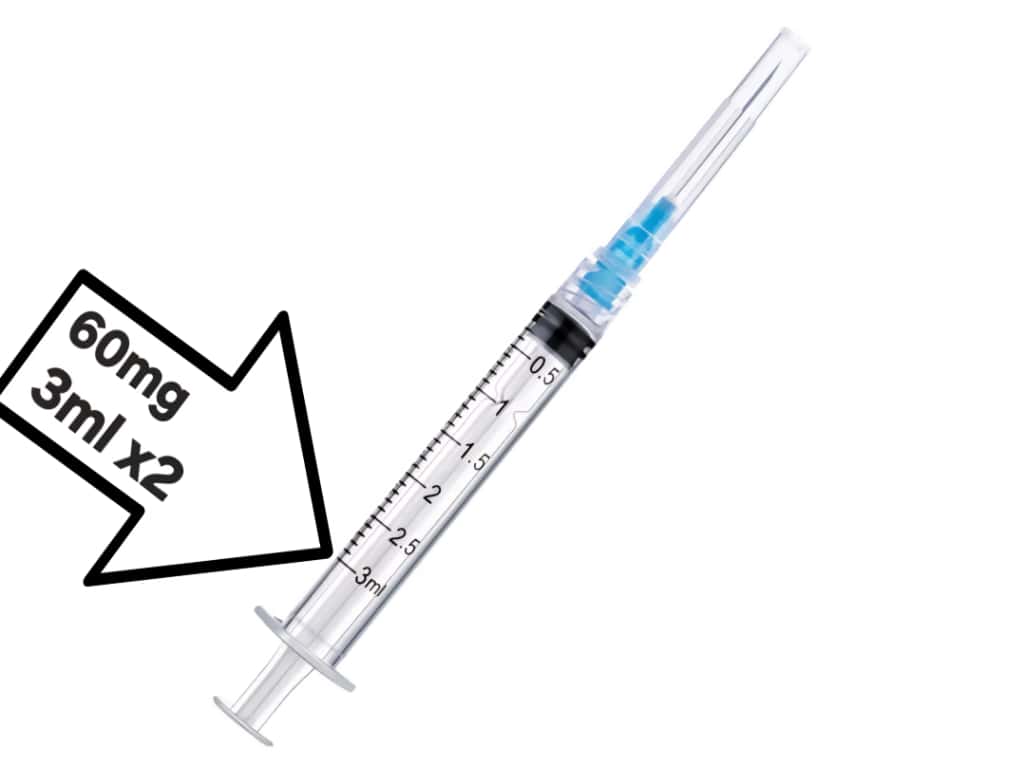GLP -1 Reconstitution Steps
Ensures accuracy and efficiency with every reconstruction.
Pick your vial
Dosage Instructions
1.-
Wash Your Hands
Make sure your hands are clean and work on a clean surface.
2.-
Open the Ampoule
Carefully break open the 3ml ampoule of injectable water.
3.-
Withdraw the Water
Use a sterile 3ml syringe to draw 0.80ml of water.
4.-
Do not use the entire ampoule — you only need 0.80 ml to mix. Draw exactly 0.80 ml of sterile water into the syringe.
5.-
Slowly inject the water into the Semaglutide vial.
6.-
Gently swirl the vial to fully dissolve the powder. Do not shake it, as this could damage the medication.
1.-
Wash Your Hands
Make sure your hands are clean and work on a clean surface.
2.-
Open the Ampoule
Carefully break open the 3ml ampoule of injectable water.
3.-
Withdraw the Water
Use a sterile 3ml syringe to draw 0.80ml of water.
4.-
Do not use the entire ampoule — you only need 0.80 ml to mix. Draw exactly 0.80 ml of sterile water into the syringe.
5.-
Slowly inject the water into the Semaglutide vial.
6.-
Gently swirl the vial to fully dissolve the powder. Do not shake it, as this could damage the medication.
The initial dose and schedule are designed to allow your body to gradually adjust while minimizing side effects.
Weeks 1 to 4
Weeks 5 to 8
Weeks 9 to 12
Weeks 13 to 16
Weeks 17 and more
Use an insulin syringe (100 units) for accurate dosing.
Dosage Instructions
1.-
Wash Your Hands
Make sure your hands are clean and work on a clean surface.
2.-
Open the Ampoule
Carefully break open the 3ml ampoule of injectable water.
3.-
Withdraw the Water
Use a sterile 3ml syringe to draw 2ml of water.
4.-
Do not use the entire ampoule — you only need 2 ml to mix. Draw exactly 2 ml of sterile water into the syringe.
5.-
Slowly inject the water into the Semaglutide vial.
6.-
Gently swirl the vial to fully dissolve the powder. Do not shake it, as this could damage the medication.
1.-
Wash Your Hands
Make sure your hands are clean and work on a clean surface.
2.-
Open the Ampoule
Carefully break open the 3ml ampoule of injectable water.
3.-
Withdraw the Water
Use a sterile 3ml syringe to draw 2ml of water.
4.-
Do not use the entire ampoule — you only need 2 ml to mix. Draw exactly 2 ml of sterile water into the syringe.
5.-
Slowly inject the water into the Semaglutide vial.
6.-
Gently swirl the vial to fully dissolve the powder. Do not shake it, as this could damage the medication.
The initial dose and schedule are designed to allow your body to gradually adjust while minimizing side effects.
Weeks 1 to 4
Weeks 5 to 8
Weeks 9 to 12
Weeks 13 to 16
Weeks 17 and more
Use an insulin syringe (100 units) for accurate dosing.
Dosage Instructions
1.-
Wash Your Hands
Make sure your hands are clean and work on a clean surface.
2.-
Open the Ampoule
Carefully break open the 3ml ampoule of injectable water.
3.-
Withdraw the Water
Use a sterile 3ml syringe to draw 1.5 ml of water.
4.-
Do not use the entire ampoule — you only need 1.5 ml to mix. Draw exactly 1.5 ml of sterile water into the syringe.
5.-
Slowly inject the water into the Terzepatida vial.
6.-
Gently swirl the vial to fully dissolve the powder. Do not shake it, as this could damage the medication.
1.-
Wash Your Hands
Make sure your hands are clean and work on a clean surface.
2.-
Open the Ampoule
Carefully break open the 3ml ampoule of injectable water.
3.-
Withdraw the Water
Use a sterile 3ml syringe to draw 1.5ml of water.
4.-
Do not use the entire ampoule — you only need 1.5 ml to mix. Draw exactly 1.5 ml of sterile water into the syringe.
5.-
Slowly inject the water into the Semaglutide vial.
6.-
Gently swirl the vial to fully dissolve the powder. Do not shake it, as this could damage the medication.
The initial dose and schedule are designed to allow your body to gradually adjust while minimizing side effects.
Weeks 1 to 4
Weeks 5 to 8
Weeks 9 to 12
Weeks 13 to 16
Weeks 17 and more
Use an insulin syringe (100 units) for accurate dosing.
Dosage Instructions
1.-
Clean all vial tops with an alcohol swab.
2.-
Draw 3 ml of sterile water from the first ampoul.
3.-
Slowly inject the 3 ml into the 60 mg Tirzepatide vial.
4.-
Roll gently between your hands until the solution is clear (do not shake vigorously).
5.-
Using a sterile syringe, transfer the full reconstituted solution into the empty 10 ml vial.
6.-
Add the remaining 3 ml of sterile water from the second ampoul into the 10 ml vial.
7.-
Roll gently to mix.
1.-
Clean all vial tops with an alcohol swab.
2.-
Draw 3 ml of sterile water from the first ampoul.
3.-
Slowly inject the 3 ml into the 60 mg Tirzepatide vial.
4.-
Roll gently between your hands until the solution is clear (do not shake vigorously).
5.-
Using a sterile syringe, transfer the full reconstituted solution into the empty 10 ml vial.
6.-
Add the remaining 3 ml of sterile water from the second ampoul into the 10 ml vial.
The initial dose and schedule are designed to allow your body to gradually adjust while minimizing side effects.
Weeks 1 to 4
Weeks 5 to 8
Weeks 9 to 12
Weeks 13 to 16
Weeks 17 and more
The initial dose and schedule are designed to allow your body to gradually adjust while minimizing side effects.
🔢 Dosing Conversion Chart
| Desired Dose | Volume (ml) | Syringe Units (U-100) |
|---|---|---|
| 2.5 mg | 0.25 ml | 25 units |
| 5.0 mg | 0.50 ml | 50 units |
| 7.5 mg | 0.75 ml | 75 units |
| 10 mg | 1.0 ml | 100 units (1 full ml) |
| 12.5 mg | 1.25 ml | 125 units* |
| 15 mg | 1.50 ml | 150 units* |
* For doses above 100 units, you will need to split the dose across two syringes, as U-100 syringes measure up to 1.0 ml (100 units).
❄ Storage
Keep refrigerated (2–8 °C).
Stable for up to 12 weeks after reconstitution.
Use an insulin syringe (100 units) for accurate dosing.










